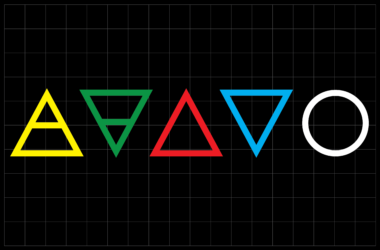AngularJS vs. React -- Which One to Pick?
Few things go unchecked in the world of web development, especially when it comes to the two major developer frameworks, AngularJS and ReactJS. Maintained by some major players in the industry (AngularJS is maintained by Google, while Facebook takes care of ReactJS), both frameworks are easy to use with high-end potential to build cutting-edge mobile and web applications.
So which is better?
Obviously, both have their pros and cons (and every developer has their own preferences as well). In order to gain clarity over both of these frameworks, let’s examine the most popular features and functions and what their differences are.
For Each Other or Against Each Other?
Angular’s popularity comes from its ability to solve many problems with building applications that render on a single page. Think of the popular social media apps (Twitter, Instagram and Facebook) as an example: when visiting a profile, you can view the content by scrolling up and down. Angular provides a client-side MVC framework that helps with launching/building dynamic apps of modern state of the art quality.
Angular is pretty much the perfect solution for handling data binding. Data binding in Angular apps involves the automatic synchronization of data between the model (or customer input source) and the “view”. When the model (or any variables related to the model) changes, the view mirrors the change, and vice versa. By cutting out multiple steps (and decreasing the amount of code necessary to create interactions and transitions), Angular can be a very appealing option.
As one of the leading frameworks, the set of functions and features now complement the needs of web developers. The ever-growing community helps new developers to get their Angular knowledge up and running very quickly. This makes it exceptionally easy to find great Angular courses, tutorials, and guides.
One of the biggest pitfalls of Angular (or any front-end framework, for that matter) is the prevalence of performance leaks. These are always present when it comes to manipulating content. For instance, when running a huge database (100k+) and a user searches it, they might experience a delay. Big or small, it is still a delay, and in modern world of web development — a delay is nothing but lost opportunity.
Now, let’s turn to React. ReactJS is an exceptional framework for managing the DOM (Document Object Model), especially when dealing with vast amounts of data. React works by creating a virtual DOM in JavaScript that acts as an intermediate representation of the DOM. This representation makes it easy to decide which elements to change in the DOM and what the results may be.

With that in mind, it appears that Angular and React are by no means competing for the top-spot of being the best all around front-end framework. Instead, they can be used together to create astonishingly fast web and mobile applications.
Individual Characteristics
Let’s take a look at the individual characteristics of both frameworks. React will compliment any mobile or web application with a larger-than-usual data subset. Angular, by itself, is great for building applications from the ground up. Together, they can be used on a single project.
Running and Deploying
Angular provides a limited scope of tools to package code in a way that we can run and deploy in any way we like. Most of the time we have to use HTML templates and by the time you’re done with it, the code looks archaic,like something out of the 80’s.
React functions from the perspective of native JavaScript, and we can use a library such as RequireJS to load our code. Thankfully, there are many other similar solutions that React will support right out the box.
One Day at a Time
The learning curve of Angular isn’t linear. Be prepared to experiment with new concepts and ideas to fully understand how each feature interacts with each other. React, on the other hand, takes only a few days to really understand the ecosystem.
Many developers say it’s a one way street with React – you only have to learn it once. While Angular may sometimes require of you to read a novel’s worth of code, React, more often than not, won’t require of you to do any code reading.
Firing Up the Debugger
The debugger, as always, is our best friend. Of course, there are even differences here between Angular and React.
The Angular ecosystem event driven. This makes the code is easy to write but hard to debug, as the stack tends to increase and evolve into something different. Angular does provide constructs that are smart and easy to understand and, if used properly, can provide for a much more smooth debugging experience.

React, of course, is different. Get the official React Developer Tools extension for Chrome and do all your virtual DOM work without leaving your screen. Subtle code differences are also what makes React debugging more appealing.
And the winner is…
…Both? There is no clear winner between these two frameworks. React’s pure JavaScript environment gives developers more flexibility and less headaches when learning something new. It’s as if every time Angular restricts something, you can expect React to provide full freedom over the same instance. Equally unique, using a combination of both will make your next big project that much easier.





